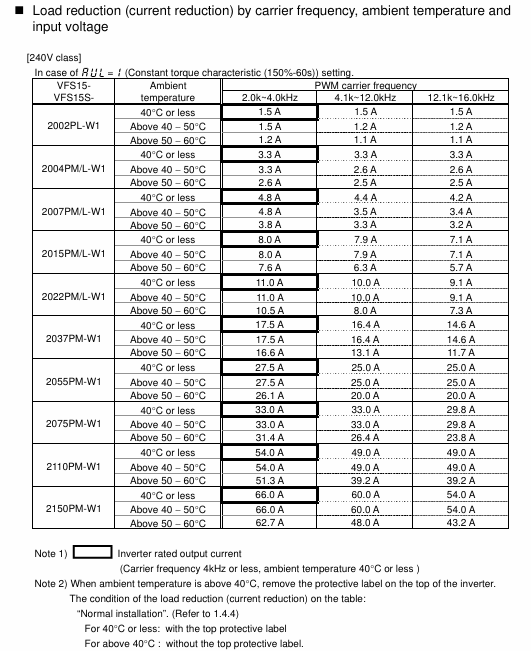TOSHIBA TOSBERT VF-S15 series frequency converter
Capacitor inspection: Observe the appearance of the capacitor for any bulges or leaks. If any are found, replace it immediately.
6.1.3 Annual Inspection (Every Year)
Insulation test: After power failure, use a 500V megohmmeter to test the insulation resistance of the main circuit to ground, which should be ≥ 1M Ω.
Parameter backup: Backup the current parameter settings (through the panel or communication tool) to prevent parameter loss.
Component lifespan inspection: Based on accumulated operating time and ambient temperature, check the lifespan of vulnerable parts such as capacitors and fans, and replace them in advance if they are close to their lifespan.
6.2 Specification for Replacement of Vulnerable Parts
6.2.1 Cooling fan
Replacement cycle: The cumulative operating time is about 20000 hours (or 2 years), and the cycle will be shortened if the ambient temperature is high.
Replacement note: Toshiba designated model fan must be used. Before replacement, power off and wait for the capacitor to discharge. After installation, test that the fan runs normally.
After replacement, set typ=9 and reset the accumulated running time of the fan to zero.
6.2.2 Capacitors (main circuit capacitors, control circuit capacitors)
Replacement cycle: The cumulative operating time is about 50000 hours (or 5 years), and it is shortened to 3 years when the ambient temperature exceeds 40 ° C.
Replacement precautions: Capacitors of the same specifications and capacity must be used. When replacing, discharge them thoroughly to avoid electric shock; After replacement, it is necessary to check the correct polarity of the capacitor.
6.2.3 Terminals and Wires
Replacement cycle: Replace immediately if insulation aging or terminal oxidation is found in the wire.
Replacement precautions: The wire specifications should be consistent with the original specifications, and the terminals should be securely crimped and tightened to the specified torque.
6.3 Storage Specifications
Storage environment: Temperature -20 ° C~60 ° C, humidity 20%~90% (no condensation), no dust or corrosive gases.
Storage period: Long term storage (over 6 months) requires power on every 6 months for 30 minutes each time to prevent capacitor failure.
Preparation before storage: Clean the equipment of dust, disconnect all external wiring, package well to prevent moisture and collision.
6.4 Disposal of Waste
Disposal requirements: Frequency converters belong to industrial waste and must be disposed of by professional industrial waste disposal institutions (such as industrial waste collectors and transporters). Disassembly by oneself is prohibited.
Preparation before disposal: Disconnect all power sources, discharge fully, remove the grounding wire, ensure that there is no residual voltage in the capacitor, and prevent capacitor explosion or harmful gas production during disassembly.
Compliance requirements: Comply with local laws and regulations related to industrial waste disposal.
7. Appendix and Supplementary Information
7.1 Compliance Standards
CE certification: Complies with CE directive requirements, requires installation of EMC board and shielding wire according to manual requirements to ensure electromagnetic compatibility.
UL/CSA standards: Complies with UL and CSA safety standards, input voltage ≤ 480V (500V level), and requires the use of specified wiring materials.
ATEX certification: Some models comply with ATEX standards and are suitable for explosion-proof environments, requiring installation according to relevant specifications.
7.2 Common Accessories and Options
Braking resistor: PBR series (such as PBR-2007 120W-200 Ω), to be selected according to the frequency converter model and load.
Reactor: Input Reactor (ACL), DC Reactor (DCL), used to improve input power factor and suppress harmonics.
Communication accessories: USB communication conversion unit (USB001Z), parameter writer (RKP002Z), expansion panel (RKP007Z).
Filter: Motor end surge voltage suppression filter (MSF series), used in long cable scenarios (over 30m).

- EMERSON
- Honeywell
- CTI
- Rolls-Royce
- General Electric
- Woodward
- Yaskawa
- xYCOM
- Motorola
- Siemens
- Rockwell
- ABB
- B&R
- HIMA
- Construction site
- electricity
- Automobile market
- PLC
- DCS
- Motor drivers
- VSD
- Implications
- cement
- CO2
- CEM
- methane
- Artificial intelligence
- Titanic
- Solar energy
- Hydrogen fuel cell
- Hydrogen and fuel cells
- Hydrogen and oxygen fuel cells
- tyre
- Chemical fiber
- dynamo
- corpuscle
- Pulp and paper
- printing
- fossil
- FANUC
- Food and beverage
- Life science
- Sewage treatment
- Personal care
- electricity
- boats
- infrastructure
- Automobile industry
- metallurgy
- Nuclear power generation
- Geothermal power generation
- Water and wastewater
- Infrastructure construction
- Mine hazard
- steel
- papermaking
- Natural gas industry
- Infrastructure construction
- Power and energy
- Rubber and plastic
- Renewable energy
- pharmacy
- mining
- Plastic industry
- Schneider
- Kongsberg
- NI
- Wind energy
- International petroleum
- International new energy network
- gas
- WATLOW
- ProSoft
- SEW
- wind
- ADVANCED
- Reliance
- YOKOGAWA
- TRICONEX
- FOXBORO
- METSO
- MAN
- Advantest
- ADVANCED
- ALSTOM
- Control Wave
- AB
- AMAT
- STUDER
- KONGSBERG
- MOTOROLA
- DANAHER MOTION
- Bently
- Galil
- EATON
- MOLEX
- Triconex
- DEIF
- B&W
- ZYGO
- Aerotech
- DANFOSS
- KOLLMORGEN
- Beijer
- Endress+Hauser
- MOOG
- KB
- Moxa
- Rexroth
- YAMAHA
- Johnson
- Westinghouse
- WAGO
- TOSHIBA


Email:wang@kongjiangauto.com





























































































































